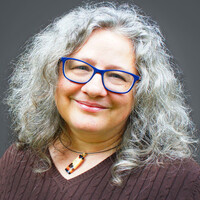You guys are having too much fun!
April Fools
Rooms “a Waste of Space,” Says Feist, Dissolves Passivhaus Institut
April 1, 2014
Shifting focus toward fully insulated forms, Passive House advocates urge designers to “trash that unvernünftig spreadsheet already.”
April 1, 2014
The Passivhaus Institut has closed its super-insulated doors and drawn its high-performing roller shutters for good.
“True efficiency can never be achieved in a building that is centered around useless space, such as living rooms, bedrooms, and dining rooms,” said Wolfgang Feist, founder of the Passivhaus Institut (PHI). “I am now ashamed of the years I wasted on these poorly designed structures. This is not what German engineering means.”
Feist went on to criticize the infamously simple Passive House metrics as “baroque,” the infamously complex Passive House Planning Package (PHPP) as “sinful,” and the entire Passive House concept as “futile.”
Founding Sphere House Institute
Feist is turning his attention to a new project, he says, involving solid cubes of rigid insulation he has dubbed Sphärhäuser. The Sphärhaus Institut (SHI) promotes three simple metrics for its cubic structures, explained Feist:
- 0.0 m2 interior space
- 0.0 kWh/m2/year energy use
- 0.0 human inhabitants
Feist is so committed to SHI, he explains, that he has filled his own home with insulation as a pilot retrofit project—“Retrofits in this regime must follow the exact same metrics as new construction,” he explained—and is now living in a large cardboard box in his garden.
Meanwhile, back in the U.S.
“This is the worst neologism to come out of Darmstadt yet,” said Martin Holladay, a frequent Passivhaus commentator. “These houses are not even spheres! They are cubes!”
Holladay adds that the system itself is a major improvement over Passive House, however: “At least these houses are actually passive,” he noted. “Also, they don’t deliver space heat through the ventilation ducts. There are no ventilation ducts! Brilliant.” He did have one additional critique, however. “I still say the metrics are arbitrary. Why 0.0 human inhabitants? What’s that even based on? Central Europe, is what.” But, Holladay huffed, “Who can be surprised? This was all foretold by inscriptions made in the thermal mass of the Saskatchewan Conservation House.”
North American Passive House practitioners, however are already “on the ball” and responding to the updates, says Mike Eliason of the Brute Force Collaborative. “It’s time to trash that unvernünftig spreadsheet and get back to the basics of what Passive House is really about—foam,” Eliason argues. “Let’s put the ‘über’ back in ‘superinsulated.’”
“We have always been the only true believers in Wolfie’s dream, even though he ignores me when I text him a 2 a.m. Darmstadt time,” claims Katrin Klingenberg, executive director of Passive House Institute U.S. (PHIUS), which parted from PHI in a high-profile schism in August 2011 (see “Passive House Schism Leaves U.S. in Limbo”). “That’s why we’ve also dissolved PHIUS and have founded the Sphere House Institute U.S. [SHIUS].”
SHIUS hits U.S. fan base
(Editor’s Note: Lloyd Alter, if you are reading this, the following paragraph encapsulates this story’s relevance particularly well and is recommended for your block quote.)
Klingenberg went on to say that, due to the variety of climates in North America—ranging “from subarctic to subtropical”—the group would be tweaking the original German Sphärhaus model. “A cube is not a cube is not a cube when you move from Darmstadt to Denali to Daytona,” she said, adding that SHIUS’s goals would only slightly modify those of its German counterpart:
- 0.0 m2 or potentially more interior space, depending on the average relative humidity at dawn on September 16 on the proposed building site
- 0.0 kWh/m2/year energy use or possibly more, or possibly less, in keeping with the lifestyle and heritage of the cube owner’s native subculture
- 5.0 “likes” per year for Klingenberg’s status updates on Facebook
- ≥ 1.0 Rottweiler puppy
- SAT math and verbal scores above the 85th percentile
- Fresh long-stemmed roses on display at all times
- Certification of fluency in the German mother tongue and at least two others
- Lifetime membership at Costco (or regional equivalent)
Feist maintains that SHIUS’s model is not “in the spirit of the true Sphere House,” adding, “Please tell Kat that I do not answer her texts only because my thumbs are cold...so cold.”
Comments
Thanks!
Mike Eliason: “Let’s put the ‘über’ back in ‘superinsulated.’” Priceless.
Better than the Onion
Even though laughter increases the expulsion rate of CO2, a little humor is still needed while trying to save the world.
Thanks for that.
Sphärhäuser + NanoAir = ?
Has anyone considered using the NanoAir product also announced by BuildingGreen to meet the Sphärhäuser standard?http://www2.buildinggreen.com/article/nanoair-set-revolutionize-insulation-industry
The embodied energy would be incredibly low!







Add new comment
To post a comment, you need to register for a BuildingGreen Basic membership (free) or login to your existing profile.